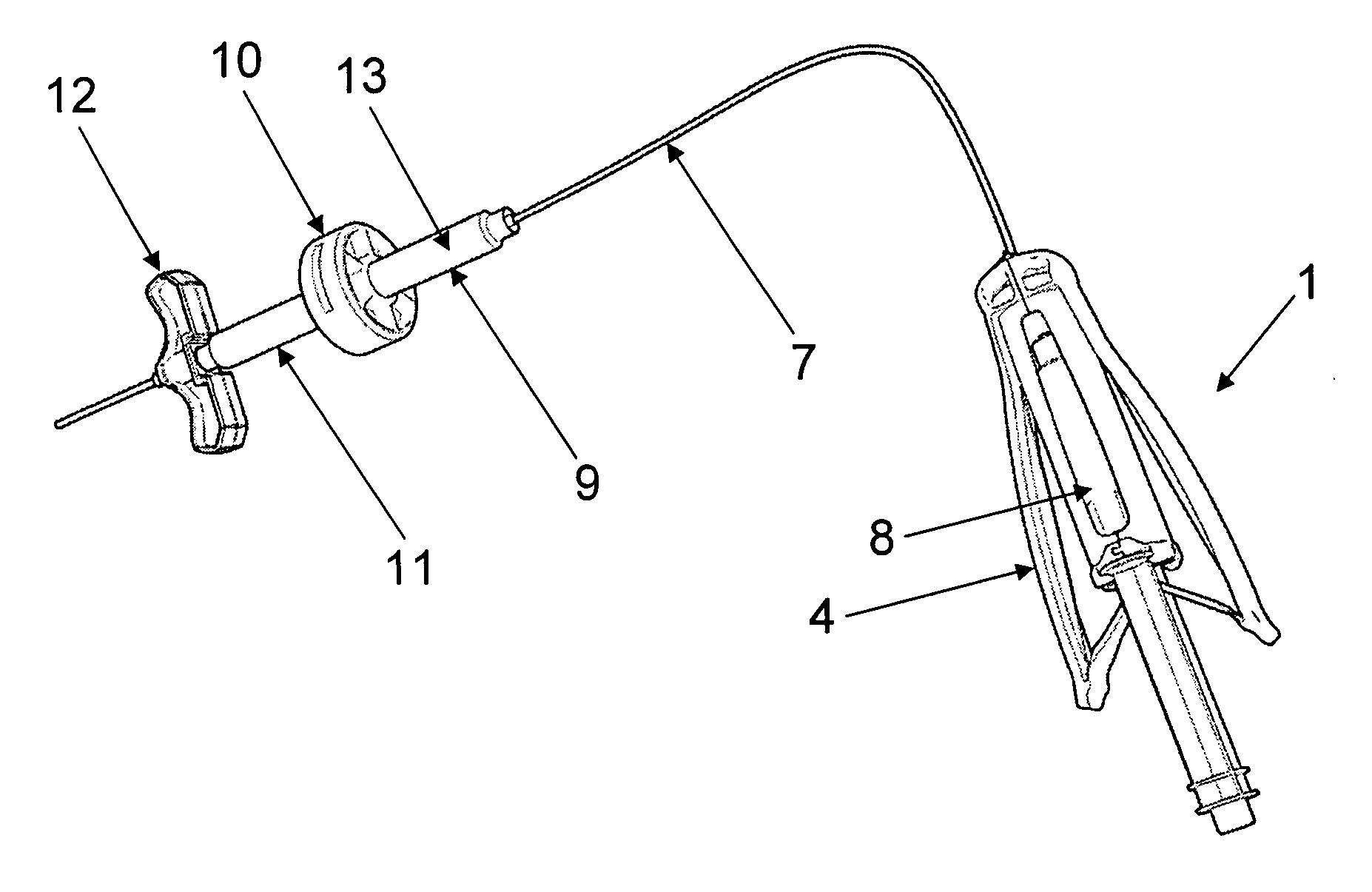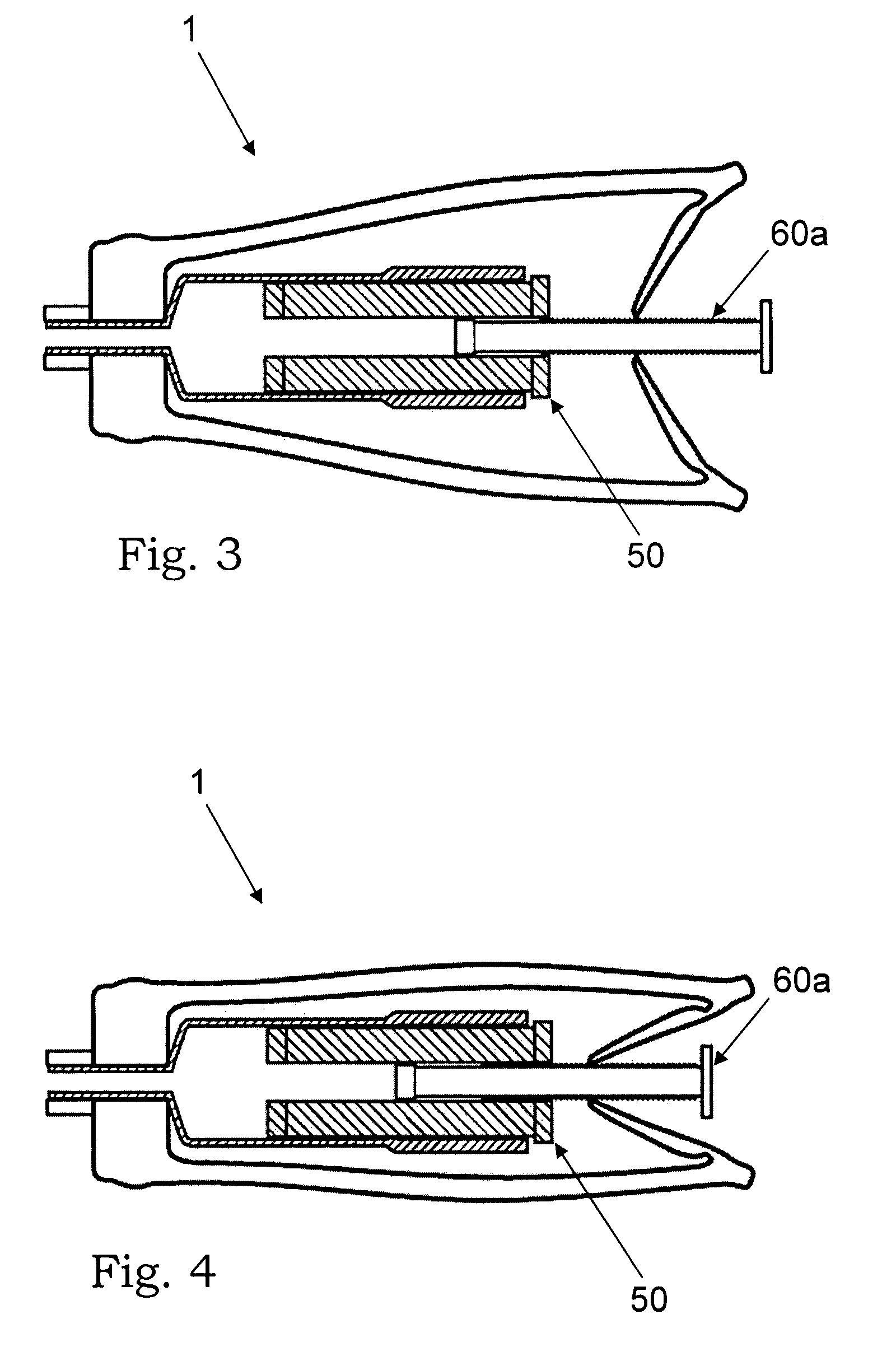Mixing and injection system for injectable biomaterials or artificial materials in orthopaedic applications
a biomaterial or artificial material technology, applied in the field of orthopaedic applications, can solve the problems of small risk of introducing infectious material into the material, inability to compare, and exposure to toxic fumes, so as to minimise the risk of introducing infection, minimise radiation exposure, and improve control, precision and safety
- Summary
- Abstract
- Description
- Claims
- Application Information
AI Technical Summary
Benefits of technology
Problems solved by technology
Method used
Image
Examples
Embodiment Construction
[0039] According to a first aspect, the present invention provides an injector system for ceramic biomaterials, such as for example Xeraspine™ or other ceramic bone cements. It is also applicable on other biomaterials, such as PMMA, calcium aluminates, and calcium phosphates. In a basic embodiment, said injector system comprises an injector device, comprising a container, said container comprising an injectable biomaterial, a grip, and means for feeding the injectable biomaterial out of the container.
[0040] Said basic embodiment comprises two main embodiments. In a first embodiment, i.e. embodiment 1, the container filled with the biomaterial is arranged in the grip of the injector device and the feeding means are arranged on the grip. In a second embodiment, i.e. embodiment 2, the container filled with the biomaterial is separated from the grip of the injector device by a hydraulic extension means.
[0041] According to embodiment 1A, said injector device comprises an injector devic...
PUM
 Login to View More
Login to View More Abstract
Description
Claims
Application Information
 Login to View More
Login to View More - R&D
- Intellectual Property
- Life Sciences
- Materials
- Tech Scout
- Unparalleled Data Quality
- Higher Quality Content
- 60% Fewer Hallucinations
Browse by: Latest US Patents, China's latest patents, Technical Efficacy Thesaurus, Application Domain, Technology Topic, Popular Technical Reports.
© 2025 PatSnap. All rights reserved.Legal|Privacy policy|Modern Slavery Act Transparency Statement|Sitemap|About US| Contact US: help@patsnap.com



